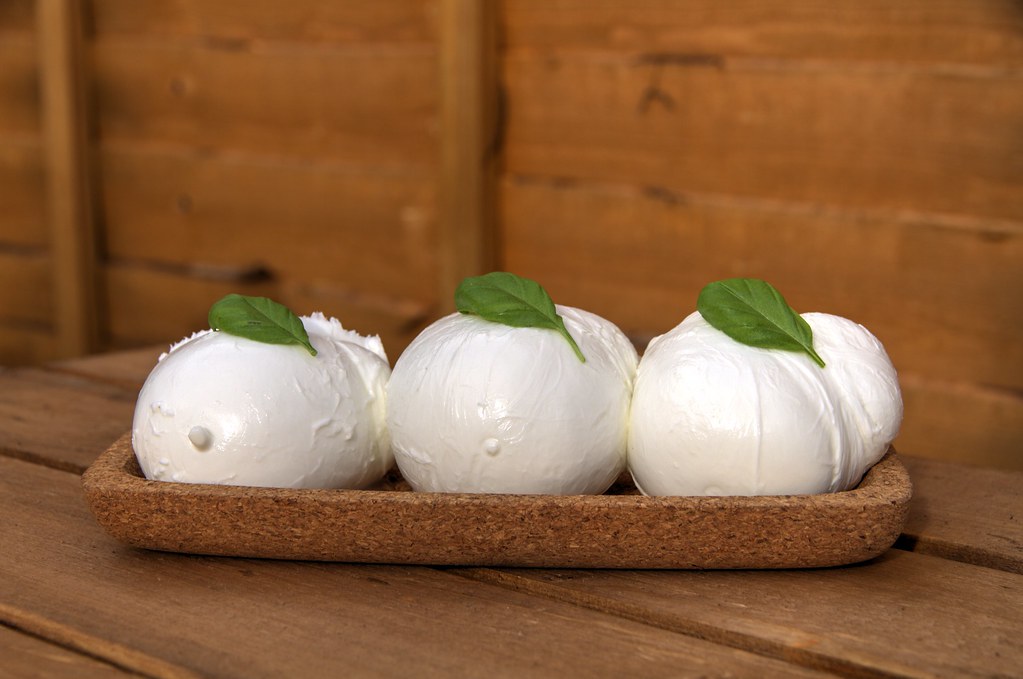Buffalo Mozzarella (Original name: Mozzarella di Bufala Campana) is a cheese variety native to Italy, holding the status of a Protected Designation of Origin (PDO). This cheese, with a creamy texture and porcelain-white color, is produced exclusively from the fresh milk of water buffaloes. One of its distinctive features is the thin rind surrounding its soft core. The well-known liquid enveloping the cheese consists of a mixture of salted brine and acid. This liquid layer serves as a protective coating that preserves the cheese's taste and texture while enhancing its flavor. The product can be smoked; however, this process must be carried out solely using natural and traditional methods, and if smoked, it must always be indicated on the label. The product was registered in the European Commission’s Geographical Indications Union Register on 21 June 1996.
History
Historical sources indicate that water buffaloes were introduced to Italy in the 7th century. Valued for their strength and ability to traverse swampy terrains without sinking, these animals were used by farmers for tasks such as plowing. From the 12th century onward, the milk of buffaloes began to be utilized in cheese production, acquiring a new purpose. Buffalo Mozzarella emerged as a local specialty in the swampy plains of South-Central Italy. The feed consumed by the water buffaloes, combined with the environment of the small streams traversing the volcanic plains, contributes to the unique flavor of Buffalo Mozzarella derived from the local region. Its connection with the environment and the artisanal skills of its producers are fundamental factors behind this local cheese becoming a global phenomenon today.

Mozzarella di Bufala Campana (Flickr)
Production Process
In the production of Buffalo Mozzarella, there is a maximum of 60 hours from the milking of the buffaloes to the beginning of the cheese-making process. Once the milk reaches the dairy, it is acidified using whey rennet sourced from buffaloes raised on the same farm or nearby. The milk is then heated to 33–39 °C and coagulated with calf rennet. The resulting curd is mixed with boiling water, melted, and kneaded to obtain an elastic structure. The cheese maker carefully shapes the mozzarella and completes the cutting process, after which it is placed in cold water. This step hardens the cheese and gives the mozzarella its thin rind surrounding the soft core. The cheese may then be placed in brine and salted; these and the packaging processes must be carried out immediately at the production site.
Legal Status
Mozzarella di Bufala Campana is registered as a food product with Protected Designation of Origin (PDO) status by the European Commission. The registration date is 21 June 1996. The legal instrument was published in the Official Journal L 148 on 21 June 1996.


